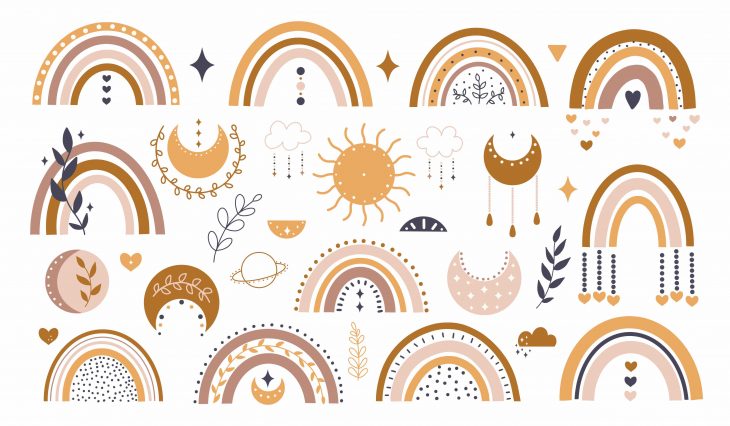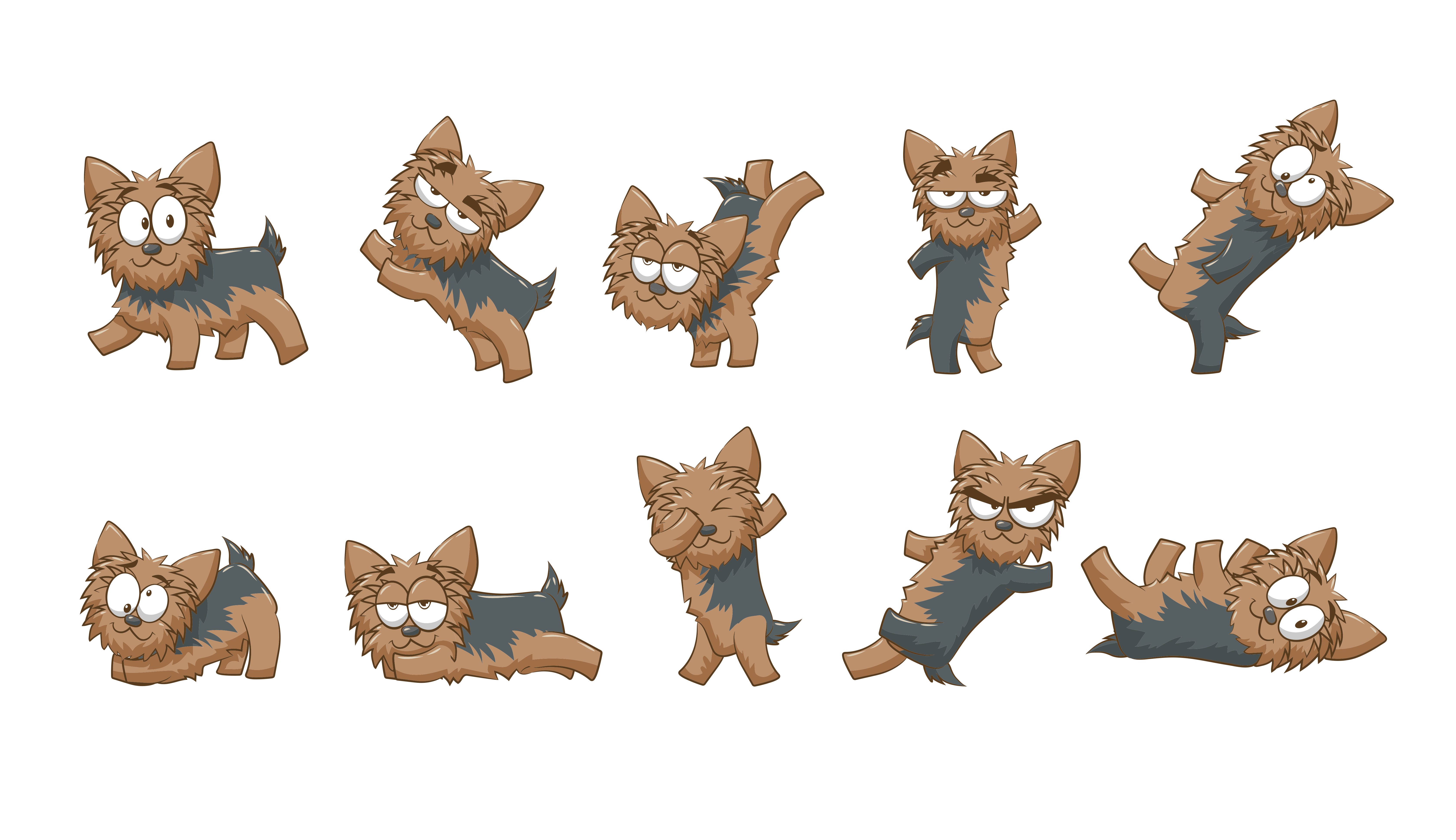
In the digital era, clipart has become a ubiquitous part of our online experience. These simple, yet expressive images have made their way into various forms of media, from presentations to websites, enhancing visual appeal and conveying messages effectively. But how much do we really know about clipart? In this article, we will explore 19 fascinating facts about clipart that you may not be aware of. So, let’s dive in and uncover the secrets behind these digital icons!
But First, What is Clipart?
Clipart, a portmanteau of “clip” and “art,” refers to pre-made images or graphics that can be readily inserted into various media formats. These images are often characterized by their simplicity, conveying concepts, objects, or ideas through easily recognizable visual elements. Clipart offers a wide range of subjects, including animals, nature, technology, and more, catering to diverse creative needs.
The Origins of Clipart
Clipart has its roots in the early 1980s when personal computers started gaining popularity. With limited graphics capabilities, computer users needed a way to add visual elements to their documents. This led to the creation of clipart libraries that offered collections of pre-made images that users could easily insert into their projects.
The Term “Clipart”
The term “clipart” is a combination of “clip” and “art.” It refers to the process of cutting out images or artwork from one source and pasting them into another. Initially, clipart was used to describe images cut from printed materials, but it later evolved to include digital images as well.

Clipart Formats
Clipart comes in various file formats, including JPEG, PNG, GIF, and SVG. Each format has its own advantages and is suitable for specific applications. JPEG and PNG formats are commonly used for web graphics, while GIFs are often used for animations. SVG (Scalable Vector Graphics) is a popular format for clipart as it allows for scalability without loss of quality.
The Diversity of Clipart
Clipart covers a wide range of subjects and themes, making it suitable for almost any occasion or project. From animals and nature to business and technology, there is a clipart available for virtually every topic you can imagine. This versatility makes it a valuable resource for designers, educators, and individuals alike.
The Evolution of Clipart Libraries
In the early days of clipart, collections were distributed on floppy disks and CDs. Users had to physically insert these media into their computers to access the images. With the advent of the internet, clipart libraries became accessible online, providing a vast selection of images that could be downloaded instantly.

Customizable Clipart
While pre-made clipart is readily available, many platforms also offer customizable clipart options. Users can modify the color, size, and other attributes of the images to suit their specific needs. This flexibility allows for greater creativity and personalization in design projects.
Clipart Licensing
Clipart is subject to various licensing agreements, and it’s essential to understand the terms of use before incorporating it into your projects. Some clipart is available for free under Creative Commons licenses, while others require purchasing a license for commercial use. Always ensure you comply with the licensing terms to avoid copyright infringement.
Difference between Clipart vs. Stock Photos
Clipart and stock photos serve similar purposes, but they differ in their style and usage. Clipart is often characterized by simple, stylized graphics, while stock photos typically depict realistic scenes and objects. You’d find that clipart is commonly used in illustrations, logos, and presentations, while stock photos are popular in marketing materials and editorial content.
Clipart and Copyright Issues
Due to its widespread availability and ease of use, clipart can sometimes be misused or plagiarized. It’s important to respect the copyright of clipart creators and use their work appropriately. Avoid downloading clipart from dubious sources and instead opt for reputable platforms that provide licensed images.
Clipart in Web Design
Clipart can be a valuable asset in web design, helping to enhance the visual appeal and user experience of a website. By incorporating relevant clipart, web designers can break up text-heavy pages, highlight key information, and create a cohesive visual theme.
Using Clipart in Presentations
Presentations often benefit from the inclusion of clipart. These images can help convey complex ideas, add humor, or create visual metaphors that aid in audience comprehension. When using clipart in presentations, it’s important to choose images that are relevant, high-quality, and align with the overall message.
Clipart in Education
Clipart plays a vital role in educational settings, allowing teachers to create visually engaging materials for their students. Whether it’s designing worksheets, presentations, or bulletin boards, clipart provides an effective way to illustrate concepts and capture students’ attention.

Clipart in Social Media
Social media platforms thrive on eye-catching visuals, and clipart can be a valuable asset for creating engaging posts. Whether it’s adding a touch of humor or emphasizing a message, clipart can help content creators stand out in the crowded social media landscape.
Clipart in Advertising
Clipart has found its place in the advertising industry as well. Advertisers often use clipart to create memorable visuals that resonate with their target audience. By leveraging the power of clipart, advertisers can enhance brand recognition and leave a lasting impression on consumers.
Accessibility of Clipart
Clipart can play a crucial role in making digital content more accessible. By using appropriate clipart alongside the text, designers can improve comprehension for individuals with learning disabilities or language barriers. Visual representations can often convey meaning more effectively than text alone.
Game Developers Use Clipart too
Clipart has even made its way into the gaming world. Game developers often utilize clipart-like graphics to create characters, objects, and backgrounds for their games. This style of art lends itself well to casual and indie games, adding a unique charm to the gaming experience.
Clipart for Crafts
Clipart has transcended the digital realm and is frequently used in various crafts. From scrapbooking and card-making to vinyl cutting and embroidery, clipart serves as a convenient resource for adding decorative elements to handmade creations.
You’d Find Clipart in Tattoos
As tattoos continue to gain popularity, clipart-style designs have become sought-after choices. The simplicity and boldness of clipart lend themselves well to tattoo art, allowing for striking and expressive designs that make a statement.

Clipart as a Source of Inspiration
Clipart can serve as a wellspring of inspiration for artists and designers. Exploring clipart collections can spark ideas, ignite creativity, and serve as a starting point for original artwork. Many renowned artists have drawn inspiration from clipart and transformed it into unique and captivating pieces.
Final Thoughts
With its rich history and wide-ranging applications, clipart has firmly established itself as a beloved resource in the digital world. Whether you’re a designer, educator, or simply someone who enjoys creative expression, clipart offers endless possibilities. So, the next time you come across a charming clipart image, remember the fascinating facts behind these digital icons.
Frequently Asked Questions (FAQs)
Can I use clipart images for commercial purposes?
The usage rights for clipart images vary depending on their licenses. Some clipart is available for free commercial use, while others require purchasing a license. Always check the licensing terms before using Clipart for commercial projects.
Are there copyright concerns when using clipart?
Clipart, like any other form of creative work, is subject to copyright protection. It’s important to respect the copyright of clipart creators and use their work appropriately. Stick to licensed clipart from reputable sources to avoid copyright infringement.
Can I customize clipart images to fit my project?
Yes, many clipart platforms offer customizable options, allowing you to modify the color, size, and other attributes of the images. This customization feature enables you to tailor the clipart to suit your specific project requirements.
Where can I find clipart collections?
There are numerous websites and platforms that offer clipart collections. Some popular options include Shutterstock, Adobe Stock, and Pixabay. Additionally, you can find clipart libraries within design software like Microsoft Office and Adobe Creative Cloud.
How do I attribute clipart images?
When using clipart under a Creative Commons license that requires attribution, it’s important to provide proper credit to the original creator. Include the creator’s name and the source of the clipart in your project, following the guidelines specified by the license.
Was this page helpful?
Our commitment to delivering trustworthy and engaging content is at the heart of what we do. Each fact on our site is contributed by real users like you, bringing a wealth of diverse insights and information. To ensure the highest standards of accuracy and reliability, our dedicated editors meticulously review each submission. This process guarantees that the facts we share are not only fascinating but also credible. Trust in our commitment to quality and authenticity as you explore and learn with us.
